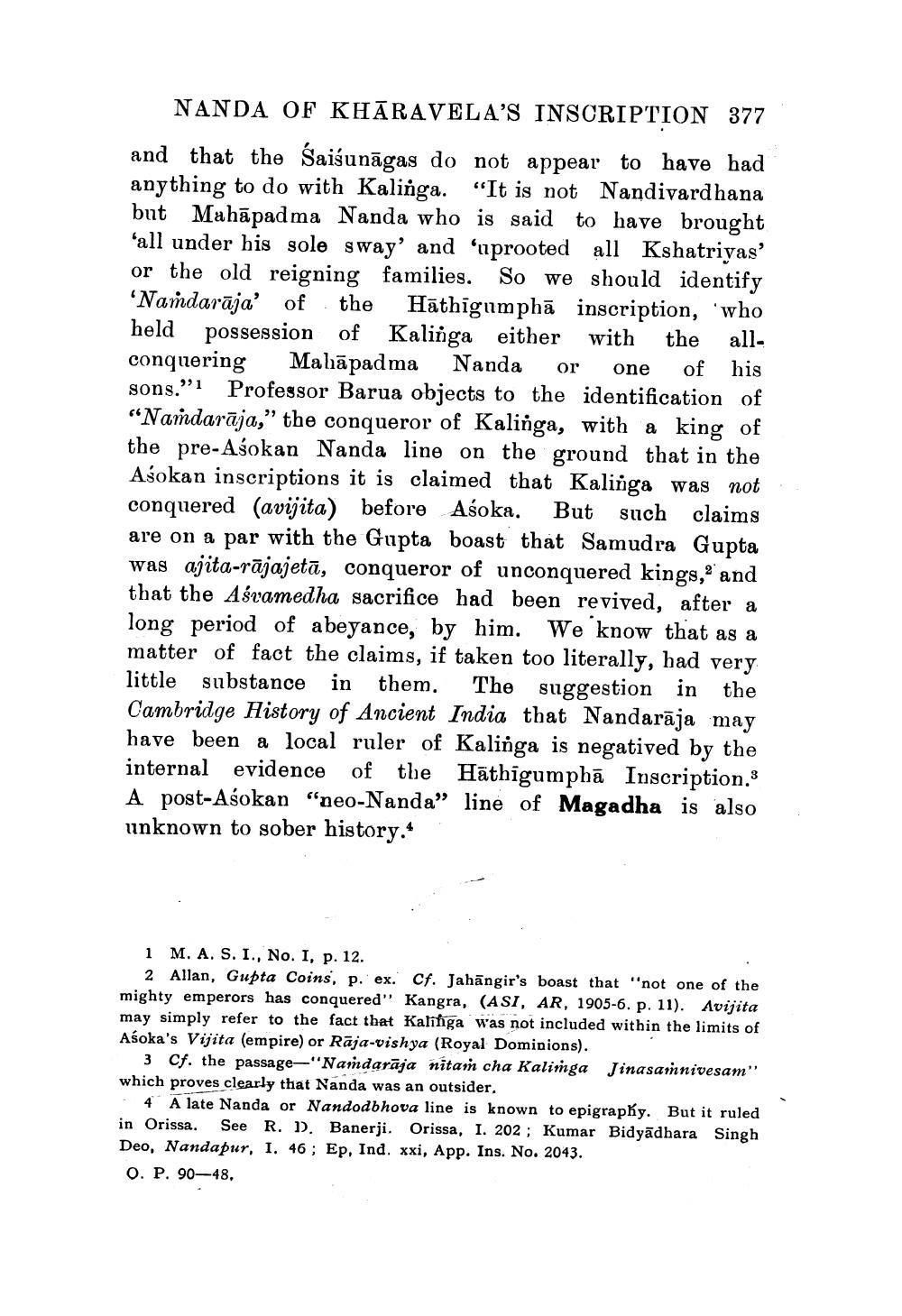________________
NANDA OF KHĀRAVEL A'S INSCRIPTION 377
and that the saišunāgas do not appear to have had anything to do with Kalinga. “It is not Nandivardhana but Mahāpadma Nanda who is said to have brought ‘all under his sole sway' and 'uprooted all Kshatriyas' or the old reigning families. So we should identify 'Namdarāja' of the Hāthīgumphā inscription, 'who held possession of Kalinga either with the allconquering Mahāpadma Nanda or one of his sons."i Professor Barua objects to the identification of “Namdarāja," the conqueror of Kalinga, with a king of the pre-Asokan Nanda line on the ground that in the Asokan inscriptions it is claimed that Kalinga was not conquered (avijita) before Aśoka. But such claims are on a par with the Gupta boast that Samudra Gupta was ajita-rājajetā, conqueror of unconquered kings, and that the Aśramedha sacrifice had been revived, after a long period of abeyance, by him. We know that as a matter of fact the claims, if taken too literally, had very little substance in them. The suggestion in the Cambridge History of Ancient India that Nandarāja may have been a local ruler of Kalinga is negatived by the internal evidence of the Hāthīgumphā Inscription.3 A post-Asokan "neo-Nanda" line of Magadha is also unknown to sober history.
1 M. A. S. I., No. I, p. 12.
2 Allan, Gupta Coins, p. ex. Cf. Jahāngir's boast that "not one of the mighty emperors has conquered" Kangra, (ASI, AR, 1905-6. p. 11). Avijita may simply refer to the fact that Kahiga was not included within the limits of Asoka's Vijita (empire) or Rāja-vishya (Royal Dominions).
3 Cf. the passage-"Namdarāja nitan cha Kalimga Jinasamnivesam" which proves clearly that Nanda was an outsider.
4 A late Nanda or Nandodbhova line is known to epigraphy. But it ruled in Orissa. See R. 1). Banerji. Orissa, I. 202 ; Kumar Bidyādhara Singh Deo, Nandapur, I. 46; Ep. Ind. xxi, App. Ins. No. 2043. 0. P. 90—48.




